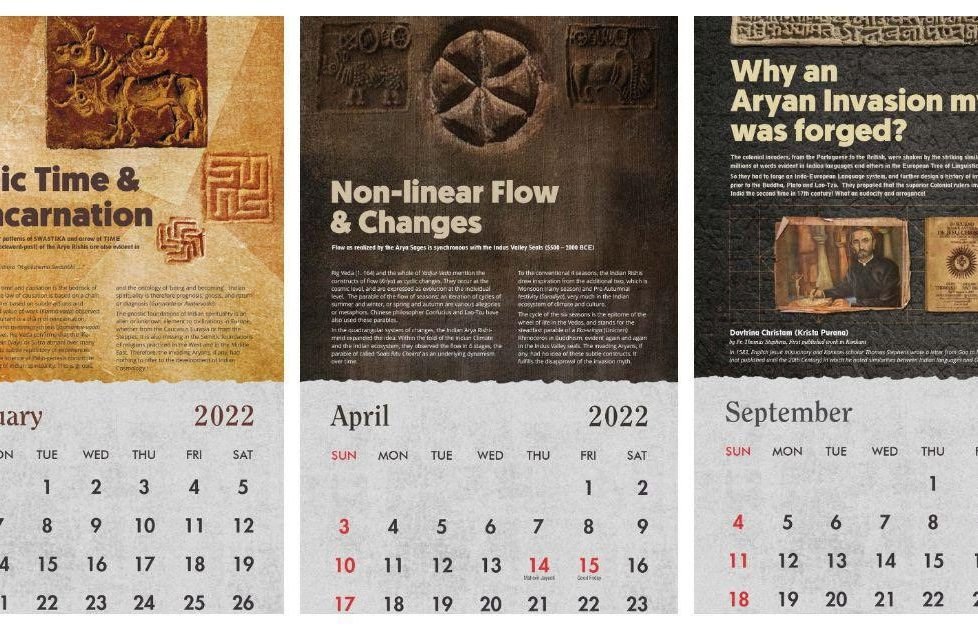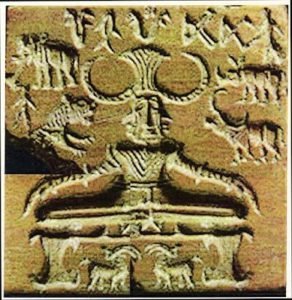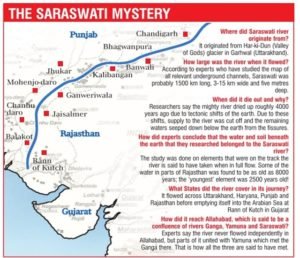Why do people today still believe in the Aryan invasion theory even though it was regarded as a myth?


Scholars in the field have migrated from the “Aryan Invasion theory” – Even the greatest specialists have failed to prove the Aryan invasion theory: Koenraad Elst
The Pushpati Seal at the National Museum in Delhi, India, shows what can only be described as a Yogic Position. This has been carried down in Indian Civilization, the idea that continuity with the Indus Valley Civilization was lost in India is contradicted by this image. The largest Indus Valley Site found to date is Rakhigarhi located in the state of Haryana, India.

“praises of Bhavya, dwelling on the banks of the Sindhu, a prince of unequalled (might), desirous of renown, who has enabled me to celebrate a thousand sacrifices.” From the Rig Veda, a description of a Vedic person living on the banks of of Sindhu River (Indus). Many view such passages to show that a migration of people may have occurred and that they settled with those who had already built the Indus Valley Civilization, these people were welcoming to them and not viewed as a threat. Instead they came with permission and dispursed amoung these cities. It would hard to believe that such would the case if the two were not friendly or more likely having lived side by side for centuries.

In India the theory of the Aryan Invasion, never was accepted in full as there was great doubt after 1857 and the deliberate attempts the British Empire to create separation of Indians based on Caste, Religion and Region from each other. Much of this was because the British Empire feared another attempt after the First War Independence failed to liberate India from the British Empire. With the regaining of Indian Independence in 1947, after 190 years of colonial economic theft and partitioning of both Indian Society and geography there was hardly any belief left in the narration of history which suited the interests of the British Empire. Tremendous research occurred after 1947, and the facts did not align at all for the Aryan Invasion Theory in India.
The Indian Vedas which are the oldest works in any Indo-European language were present in India but not anywhere else. The Zend Avesta, which was written in Avestan a near identical language to Vedic Sanskrit, also is found near India in Iran. Yet these texts which share references of places, and also the same inflected meanings of words both spiritual and descriptive are not found in any other Indo-European language nor were they passed down anywhere but India and Iran. The idea that languages and traditions are maintained after a long migration is actually not the case as observed in human history. What actually occurs is slow loss of the meanings of cognates over time. Thus, Vedic Sanskrit and Avestan if the products of migration should have actually been far less inflected than they were, yet they are the two most inflected languages of the Indo-European language family. They are not only close the source of their origin but rather likely at this respective area. If any migration did occur it was very close to its source of origin, and likely the populations were already intermingling.
Other great considerations are two very important factors, the Indian Vedas not only place a date of events contained in its descriptions, they also state clearly that those who contributed to them, had lived the Vedic world for hundreds of generations. This might have been a dismissible point, had the Indian Vedas not addressed the placement of stars in the night sky above the geography that is described in incredible detail. The Vedic people describe the geography of Afghanistan, Sind, Punjab and later Bengal and the Ganges River, and even the way to the South of India. They called the way to the South the Dakshinapatha, and this is cognate is easily understood by a Hindi speaker even today, as “Dakshin” means “South”, and “Patha” means “way.”
If we date the Vedas according to the stars as they stood in their descriptions a date of around 4000 B.C. is reached, and this correlates with one very important reference Vedas make to the Saraswathi River, for it is both described as a mighty river and then later as one which is in the process of drying up. The Saraswathi was regarded as a mythical river by British Scholars who at best gained a rudimentary understanding of Vedic Sanskrit. Yet, in 2000, Indian Satellites found the long dried up riverbank of the Saraswathi, exactly where the Vedas had stated the river once flowed. The Saraswathi had begun drying up during the end of the last Ice Age, and likely was completely dried out by 1800 B.C. The Vedic people had not invaded India around 1500 B.C. as colonial historians had stated, as they never would have known about the Saraswathi and for sure never described it as a mighty flowing river.

The Vedic people were themselves of differing complexions and appearances, but their self designation as “Arya”, had nothing to do with appearance. They did even reserve the designation only for themselves they linked it to understanding the Rig-Vedic Structure of learning, in fact to be an “Arya” a person was only required to understand the Vedas. This community stretched the near entirety of the Indian-Subcontinent in time. The idea that there was some exclusivity to this based on race or color, was colonial concept designed to justify their rule over a civilization which was existed at the very beginning of the human awakening, which led to the discovery of agriculture and the world’s first settlements. The Vedic people had dared to question their place in the cosmos, and their conclusion was unlike any other. They reasoned the concepts of Dharma, Karma, and rebirth, and then began a path towards the reduction of all violence, holding all life sacred. The Vedas attempted to create a goal of the reduction of the consumption of animals, to find ways to reduce confrontation, and to encourage people to find spiritual peace.
The British Empire’s Massacre of 2800 Innocent unarmed Indian Civilians at Jallianwala Bagh, Punjab India. April 13, 1919. An infant of 8 months was the youngest victim. Jallianwala Bagh, Memorial Amritsar, Punjab, India. No apology has ever been given for this heinous genocide.
Colonial propagated theories attempted to take away India’s link to itself, and to deny Indians the source of their age old pride. A myth was created of fair skinned invaders who had invaded India, and enslaved the darker inhabitants of India. These scholars used the concept of “Varna” or “Color” from the Vedas to justify this. Yet, the Vedas clearly stated that “Varna”, referred to the flags of the guilds of Ancient India and not to people. For those 66 million Indians who perished in colonial famines, and saw their nation become the world’s largest poor nation from the world’s largest economy in 1757, there is one more painful reality they dealt with and this is the loss of their identity to colonial theories which attempted to portray them as inferior people. The Vedic people are part of the mosaic of India, and their legacy is the legacy of every Indian and it could not be taken away, and will not be. Theories created by those who had not even the knowledge to understand Vedic Sanskrit do not hold credibility.
Aryan Invasion theory is a fantasy and it served a lot of politicians of the 20th century. For the British Raj, it was a tool for their legitimacy. For the Nazis, it was a tool for racism. For Indian elite such as Nehru, it was a source of links with the Europeans. For Hindutva campaigners such as Savarkar it was a source of pride. For the Dravidastan campaigners it was a justification for their hatred towards the northerners and Brahmins. In short, it was a happy theory for everyone.
However, as the historians went deep they didn’t find much evidence for this “mindblowing” theory.
Think of what the Aryan Invasion means. Some group of Central Asians barged into the largest civilization of world [IVC] at about 1500 BCE, taken over the whole subcontinent and predominantly brought their gene pool, culture, language etc. And they didn’t have any super weapon like guns, nuclear bombs or automobiles to bring this fantasy.
These must be super human ninjas, right?
Was that feat every replicated? British empire was the most powerful of its time and brought a lot of cultural changes over 2 centuries. But, does that mean Indians became Europeans in genetic terms? Even with all its power and naval extent, it didn’t change India’s gene pool. In the same way, the Mughals brought the guns and built among the most powerful empires of the world of its time. Did that make Indians into Central Asians?
India was quite populated even in 1500 BCE and any small group of central Asian “Aryans” who came to Indian borders would have merged into India without a trace, like what happened in Hun Invasions or later Mughal & British invasions.
And they did without leaving any evidence of mass destruction or in folk literature. It didn’t appear in the Ramayana or the Mahabharata of that time. Maybe the “blue eyed ninjas” were biased towards their own?
But, even the other writers such as Buddha and Megasthenes or Arian of Greece who came little after that time didn’t mention any such thing. Greeks were more puzzled about the peculiarities of Indian culture. Neither in folk literature of India nor in Europe/West Asia we find any direct evidence of these. In the absence of these, linguists for a long time relied on the Deva-Asura battles and other parts of Indian epics. Later, even these had too many holes.
We don’t have any real evidence for Aryan Invasion theory. Sure, there are similarities between Indian and European cultures, but with Occam’s Razor we can use simpler explanations for migration of language, culture or earlier large migrations in place of en masse changes in Indian genetic pool.
DISCLAIMER: The author is solely responsible for the views expressed in this article. The author carries the responsibility for citing and/or licensing of images utilized within the text.
